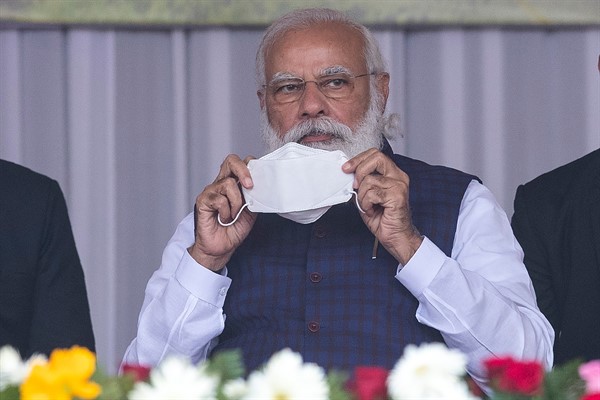In the run-up to India’s 2014 elections, the Hindu nationalist Bharatiya Janata Party, or BJP, campaigned on the slogan, Achhe din aane waale hain—“The good days are coming.” Led by the charismatic and popular Narendra Modi, who now serves as prime minister, the BJP stormed to power that year, decimating the long-ruling Indian National Congress party. Then, in the 2019 elections, the BJP improved on its previous electoral performance, taking more than 300 seats. It was the first time in 30 years that a single party had won a majority of the 543 seats in India’s legislature in back-to-back elections.
Yet today, with a faltering economy, rising fuel prices and widespread anger over the government’s poor response to the coronavirus pandemic, the good days seem further away than ever. While the BJP’s grip on power remains firm, recent events have exposed chinks in its political armor.
Since taking office seven years ago, Modi has consistently been one of the world’s most popular leaders, as the BJP has invested heavily in building and maintaining his image as a transformational leader. Indeed, the ability to directly communicate with voters through its dominance of both traditional and social media is a critical component of the BJP’s political success. Despite a slip in popularity as COVID-19 cases have spiked in India, survey data continues to find Modi as much more popular than most other world leaders. Yet the aggressiveness with which the government continues to project his infallibility betrays a certain nervousness about Modi’s image.

